The Ultimate Feminine Energy: Exploring the 10 (Dus) Mahavidya
Mahavidya is a Sanskrit term that refers to the ten powerful and revered goddesses in Hinduism. The term “Maha” means great, and “Vidya” means knowledge or wisdom, thus Mahavidya represents the ten great forms of wisdom and knowledge in the Hindu tradition. The Mahavidya are often associated with the practice of Tantra and are worshipped by devotees seeking spiritual growth and transformation. Each Mahavidya is associated with a specific aspect of the divine feminine energy and has a unique mythology, iconography, and spiritual practices associated with her. The ten Mahavidya are Kali, Tara, Tripura Sundari (or Shodashi), Bhuvaneshwari, Chinnamasta, Dhumavati, Bagalamukhi, Matangi, Kamala, and Bhairavi.
Table of Contents
Exploring The Ten Mahavidya In Tantra Yoga
Origin of the Mahavidya
The origin of the Mahavidya is a matter of debate among scholars and historians. Some scholars believe that the Mahavidya originated in the Tantric tradition of Hinduism around the 6th century CE. According to this theory, the Mahavidya emerged as a group of ten powerful and fierce goddesses who were worshipped by Tantric practitioners as embodiments of divine energy and wisdom.
Other scholars suggest that the Mahavidya have their roots in earlier Vedic and Puranic traditions, where they were associated with different aspects of the divine feminine. In these traditions, the goddesses were worshipped as protectors, creators, and destroyers of the universe, with each goddess representing a specific aspect of the divine feminine energy.
Regardless of their origin, the Mahavidya became an integral part of the Tantric tradition and were worshipped by Tantric practitioners as embodiments of the divine feminine energy that could lead to spiritual liberation and enlightenment. The Mahavidya also became associated with the practice of meditation, mantra chanting, and other spiritual practices aimed at awakening the Kundalini energy and achieving a higher state of consciousness.
History of the Mahavidya
The history of the Mahavidya is closely linked to the development of Tantra, a spiritual and philosophical tradition that emerged in India around the 6th century CE. Tantra is characterized by its emphasis on esoteric and experiential practices aimed at achieving spiritual liberation and enlightenment.
The Mahavidya emerged as a group of ten powerful and revered goddesses in the Tantric tradition. Each Mahavidya is associated with a specific aspect of the divine feminine energy and has a unique mythology, iconography, and spiritual practices associated with her.
The earliest references to the Mahavidya can be found in Tantric texts such as the Matsyendrasamhita, which dates back to the 8th century CE. The Mahavidya were also mentioned in other Tantric texts such as the Kularnava Tantra and the Rudrayamala Tantra.
Over time, the worship of the Mahavidya became an integral part of the Tantric tradition, and various Tantric sects developed around the worship of specific Mahavidya. For example, the Kali Kula sect worshiped Goddess Kali, while the Shri Vidya sect worshipped Goddess Tripura Sundari.
The Mahavidya also had an influence on other spiritual and cultural traditions in India. For example, the worship of Goddess Kali became an important part of the Shakta tradition of Hinduism, and the goddess was also worshipped in Buddhist and Jain traditions.
In modern times, the worship of the Mahavidya has gained popularity among spiritual seekers in India and abroad. The Mahavidya are revered as embodiments of the divine feminine energy and are worshipped for their ability to bestow spiritual growth, transformation, and enlightenment.
Importance of the Mahavidya in Hinduism
The Mahavidya play an important role in Hinduism, particularly in the Tantric tradition, where they are revered as embodiments of the divine feminine energy and wisdom. Here are some of the reasons why the Mahavidya are important in Hinduism:
Spiritual growth and transformation
The Mahavidya are worshipped for their ability to bestow spiritual growth and transformation upon their devotees. Each Mahavidya represents a specific aspect of the divine feminine energy, and by worshipping and meditating on her, one can attain spiritual liberation and enlightenment.
Diversity and inclusivity
The Mahavidya represent a diverse range of qualities and aspects of the divine feminine. They are worshipped by people of all genders, castes, and backgrounds, making the Mahavidya a symbol of inclusivity and diversity in Hinduism.
Tantric tradition
The Mahavidya are closely linked to the Tantric tradition of Hinduism, which emphasizes esoteric and experiential practices aimed at achieving spiritual liberation and enlightenment. The Mahavidya are an integral part of Tantric practices such as mantra chanting, meditation, and ritual worship.
Iconography and mythology
Each Mahavidya has a unique iconography and mythology associated with her, making her a distinct and recognizable embodiment of the divine feminine. The Mahavidya are often depicted in intricate and beautiful artwork, which adds to their significance in Hinduism.
Cultural influence
The Mahavidya have had a significant cultural influence on Hinduism and beyond. The worship of Goddess Kali, for example, has become an important part of the Shakta tradition of Hinduism and has also influenced Buddhist and Jain traditions.
Overall, the Mahavidya are important in Hinduism for their representation of the divine feminine energy and their ability to bestow spiritual growth, transformation, and enlightenment upon their devotees.
Which is the Most Powerful Mahavidya?
In Hinduism, each Mahavidya is considered powerful in her own right and is worshipped for specific aspects of the divine feminine energy. It is not appropriate to compare the power of the Mahavidya, as they represent different aspects of the divine and are worshipped for different purposes.
That being said, some traditions place Goddess Kali or Tripura Sundari (also known as Shodashi) as the most powerful Mahavidya. Kali is revered for her power to destroy ignorance and ego, while Tripura Sundari represents the power of beauty and harmony. However, it is important to note that all ten Mahavidya are equally revered and worshipped by their devotees.
What are the 10 Mahavidya and Their Direction?
The Mahavidya is a group of ten goddesses in Hinduism who represent different aspects of the divine feminine energy. Each Mahavidya is associated with a specific direction, as follows:
- Kali: Kali is associated with the south direction. She represents the power of destruction and transformation and is worshipped for her ability to destroy ignorance and ego.
- Tara: Tara is associated with the southeast direction. She represents the power of compassion and protection and is worshipped for her ability to protect her devotees from harm.
- Tripura Sundari (or Shodashi): Tripura Sundari is associated with the east direction. She represents the power of beauty and harmony and is worshipped for her ability to bestow material and spiritual wealth.
- Bhuvaneshwari: Bhuvaneshwari is associated with the northeast direction. She represents the power of creation and is worshipped for her ability to create and sustain the universe.
- Bhairavi: Bhairavi is associated with the north direction. She represents the power of fearlessness and is worshipped for her ability to remove fear and ignorance.
- Chinnamasta: Chinnamasta is associated with the northwest direction. She represents the power of self-sacrifice and is worshipped for her ability to bestow spiritual enlightenment.
- Dhumavati: Dhumavati is associated with the west direction. She represents the power of detachment and is worshipped for her ability to bestow liberation from worldly attachments.
- Bagalamukhi: Bagalamukhi is associated with the southwest direction. She represents the power of victory and is worshipped for her ability to bestow victory over one’s enemies.
- Matangi: Matangi is associated with the southeast direction. She represents the power of speech and is worshipped for her ability to bestow eloquence and mastery over language.
- Kamala: Kamala is associated with the center. She represents the power of abundance and is worshipped for her ability to bestow wealth, prosperity, and spiritual growth.
Overall, the direction associated with each Mahavidya is an important aspect of their symbolism and mythology in Hinduism. The direction is often used in ritual worship and meditation practices aimed at invoking the power and blessings of the Mahavidya.
The Significance of Dus Mahavidya
Here are the ten Mahavidya in Hinduism, along with their significance:
Kali
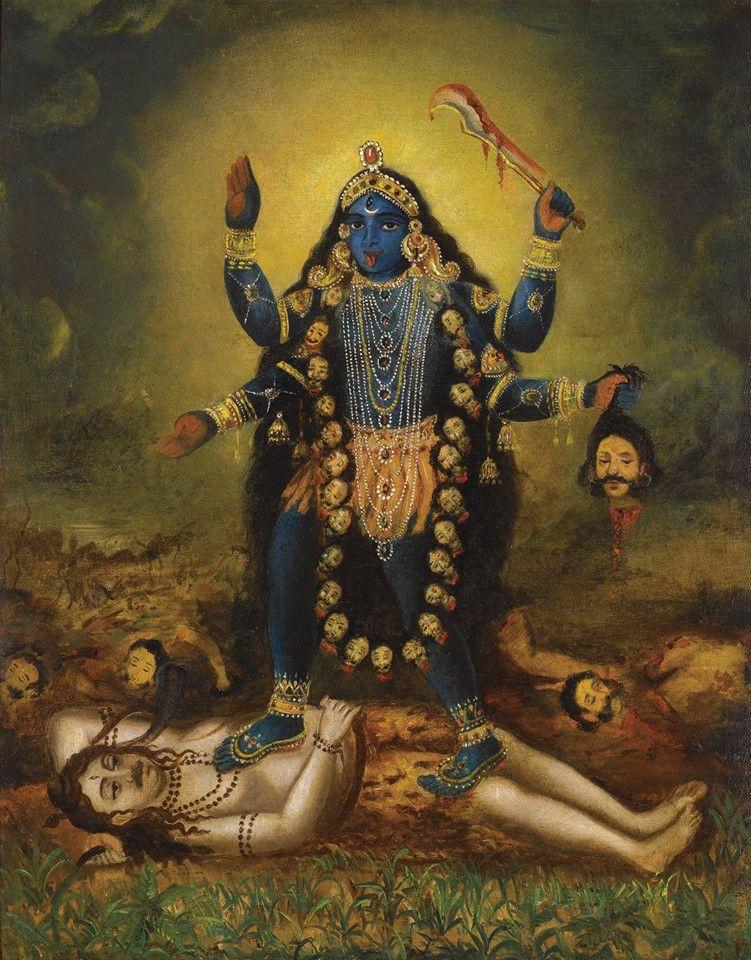

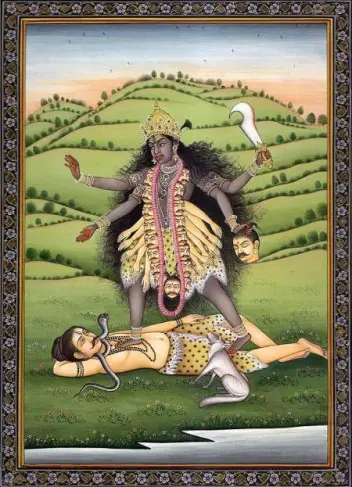
Kali is the embodiment of the power of destruction and transformation. She is depicted with a fierce demeanor and is associated with the south direction. Kali represents the power of time and death, as well as the power of creation and dissolution. She is worshipped for her ability to destroy ignorance, fear, and ego, and to awaken spiritual transformation in her devotees.
Tara


Tara is the embodiment of the power of compassion and protection. She is depicted as a beautiful and peaceful goddess and is associated with the southeast direction. Tara represents the power of forgiveness, healing, and spiritual upliftment. She is worshipped for her ability to protect her devotees from harm, fear, and negative influences.
Tripura Sundari (Shodashi)
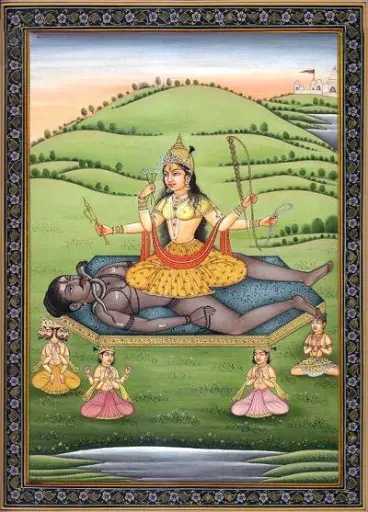
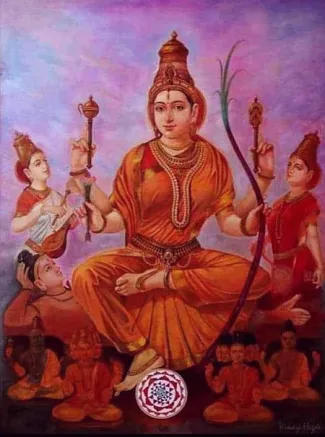
Tripura Sundari is the embodiment of the power of beauty and harmony. She is depicted as a youthful and beautiful goddess and is associated with the east direction. Tripura Sundari represents the power of material and spiritual wealth, creativity, and love. She is worshipped for her ability to bestow abundance, prosperity, and spiritual growth.
Bhuvaneshwari

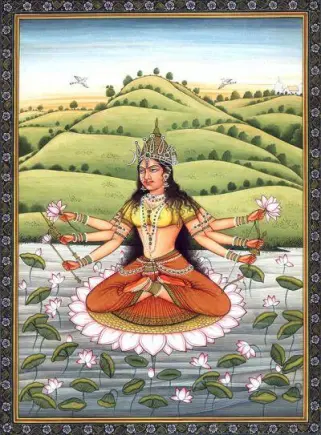
Bhuvaneshwari is the embodiment of the power of creation and sustenance. She is depicted as a graceful and gentle goddess and is associated with the northeast direction. Bhuvaneshwari represents the power of motherhood, nurturing, and protection. She is worshipped for her ability to create and sustain the universe, and to protect her devotees from harm and suffering.
Bhairavi

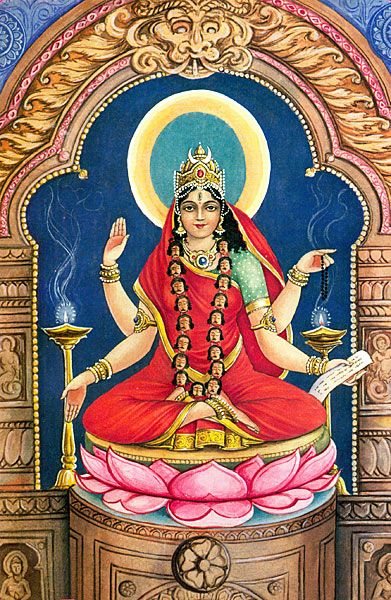

Bhairavi is the embodiment of the power of fearlessness and detachment. She is depicted as a fierce and powerful goddess and is associated with the north direction. Bhairavi represents the power of inner strength, courage, and detachment. She is worshipped for her ability to remove fear and ignorance and to awaken the inner power and courage of her devotees.
Chinnamasta
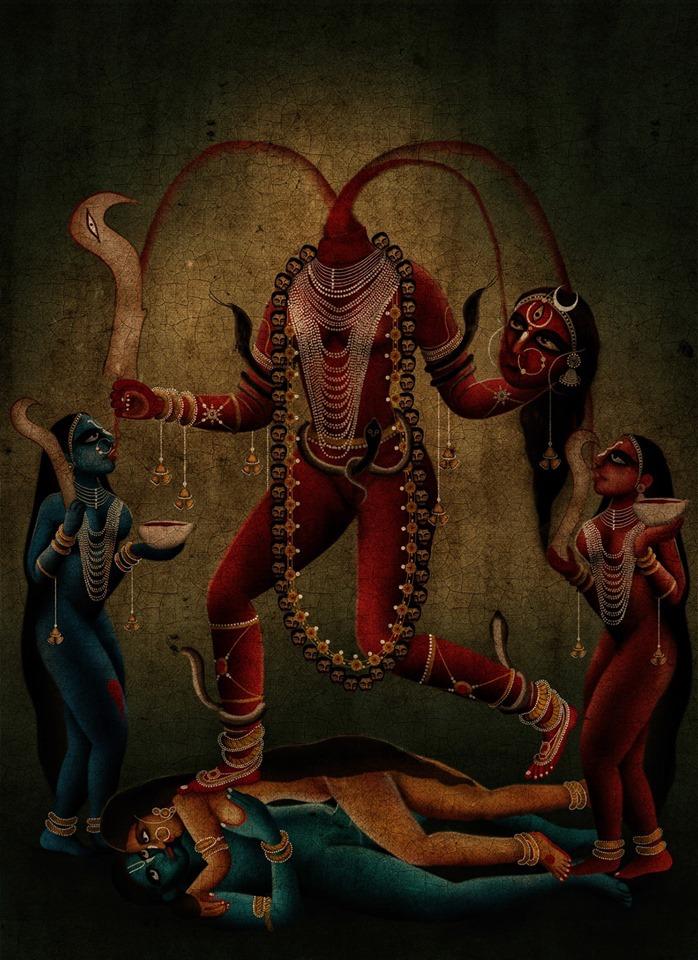
Chinnamasta is the embodiment of the power of self-sacrifice and transformation. She is depicted as a fierce and self-decapitating goddess and is associated with the northwest direction. Chinnamasta represents the power of spiritual transformation, enlightenment, and detachment. She is worshipped for her ability to bestow spiritual awakening and self-realization upon her devotees.
Dhumavati
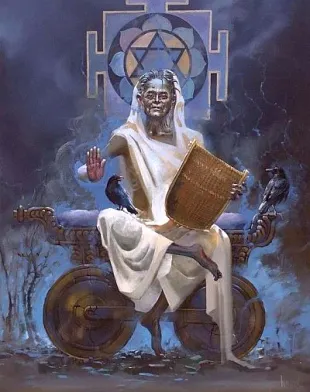
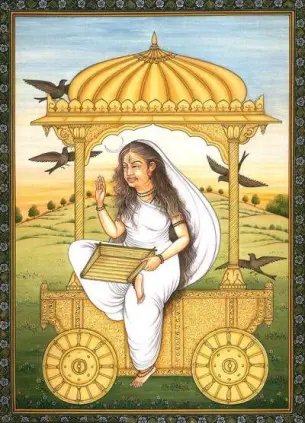
Dhumavati is the embodiment of the power of detachment and transcendence. She is depicted as a dark and unattractive goddess and is associated with the west direction. Dhumavati represents the power of spiritual detachment, renunciation, and liberation. She is worshipped for her ability to bestow liberation from worldly attachments and ignorance.
Bagalamukhi
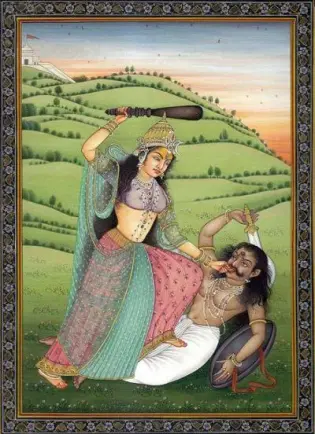
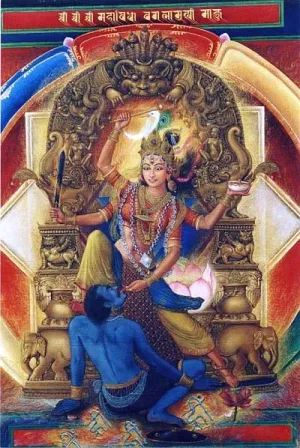
Bagalamukhi is the embodiment of the power of victory and domination. She is depicted as a fierce and powerful goddess and is associated with the southwest direction. Bagalamukhi represents the power of victory over one’s enemies, obstacles, and negative influences. She is worshipped for her ability to bestow protection, victory, and power upon her devotees.
Matangi
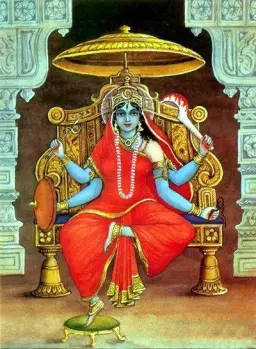
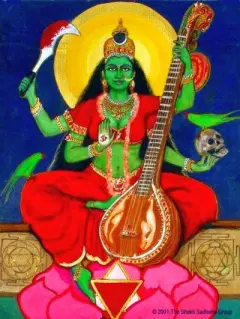
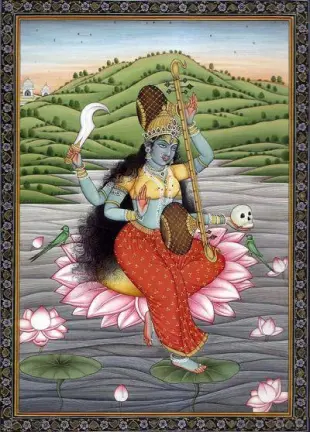
Matangi is the embodiment of the power of speech and creativity. She is depicted as a dark-skinned and beautiful goddess and is associated with the southeast direction. Matangi represents the power of creative expression, knowledge, and wisdom. She is worshipped for her ability to bestow eloquence, mastery over language, and creative inspiration upon her devotees.
Kamala

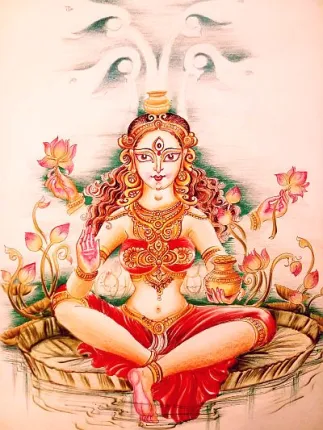
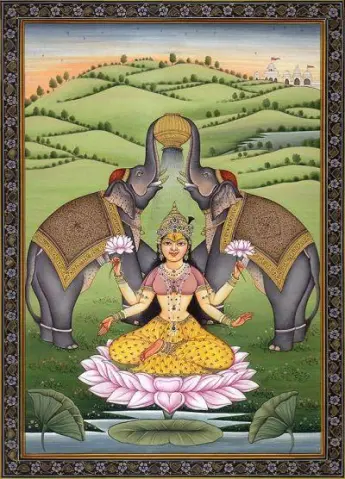
Kamala is the embodiment of the power of abundance and prosperity. She is depicted as a beautiful and graceful goddess and is associated with the center. Kamala represents the power of material and spiritual abundance,
What are the Benefits of Worshipping Dus Mahavidya?
In Hinduism, worshipping the Dus Mahavidya, the ten forms of the divine feminine, is believed to bring various benefits to devotees. Here are some of the benefits of worshipping Dus Mahavidya:
- Spiritual growth: Worshipping Dus Mahavidya is believed to help the devotee grow spiritually and attain self-realization.
- Protection from negative energies: Devotees believe that worshipping Dus Mahavidya helps protect them from negative energies, evil spirits, and harmful influences.
- Removal of obstacles: Devotees believe that worshipping Dus Mahavidya helps remove obstacles and difficulties in their lives, paving the way for success and prosperity.
- Healing and well-being: Worshipping Dus Mahavidya is believed to bring physical, emotional, and mental healing, improving the overall well-being of the devotee.
- Prosperity and abundance: Devotees believe that worshipping Dus Mahavidya brings prosperity and abundance in all aspects of life, including material and spiritual wealth.
- Fulfillment of desires: Devotees believe that worshipping Dus Mahavidya helps fulfill their desires and wishes.
- Wisdom and knowledge: Worshipping Dus Mahavidya is believed to bestow wisdom and knowledge upon the devotee, helping them make wise decisions and gain mastery over their lives.
- Self-confidence and courage: Devotees believe that worshipping Dus Mahavidya helps build self-confidence and courage, enabling them to face challenges and overcome obstacles with ease.
Overall, worshipping Dus Mahavidya is believed to bring various benefits to devotees, helping them lead a fulfilling and meaningful life.
Conclusion
In conclusion, the Dus Mahavidya, the ten forms of the divine feminine in Hinduism, represents the ultimate power and energy of the universe. Each Mahavidya represents a different aspect of the divine feminine, such as wisdom, knowledge, destruction, and creation. Worshiping the Mahavidya is believed to bring spiritual growth, protection from negative energies, removal of obstacles, healing, prosperity, fulfillment of desires, wisdom, knowledge, self-confidence, and courage. The worship of the Mahavidya is an integral part of Hinduism, and their significance is deeply rooted in Hindu mythology and philosophy. Through the worship of the Mahavidya, devotees seek to connect with the divine feminine energy and experience its transformative power in their lives.
References
- Shankarnarayanan, S (1972). The Ten Great Cosmic Powers: Dasa Mahavidyas (4 ed.). Chennai: Samata Books. pp. 4–5. ISBN 9788185208381.
- Kinsley (1997) p. 302
- Daniélou, Alain (1991). The Myths and Gods of India: The Classic Work on Hindu Polytheism from the Princeton Bollingen Series. Inner Traditions / Bear & Co. pp. 284–290. ISBN 978-0-89281-354-4.
- Kinsley, David R (1987). Hindu Goddesses: Vision of the Divine Feminine in the Hindu Religious Tradition. Motilal Banarsidass Publication. pp. 161–165. ISBN 9788120803947.
